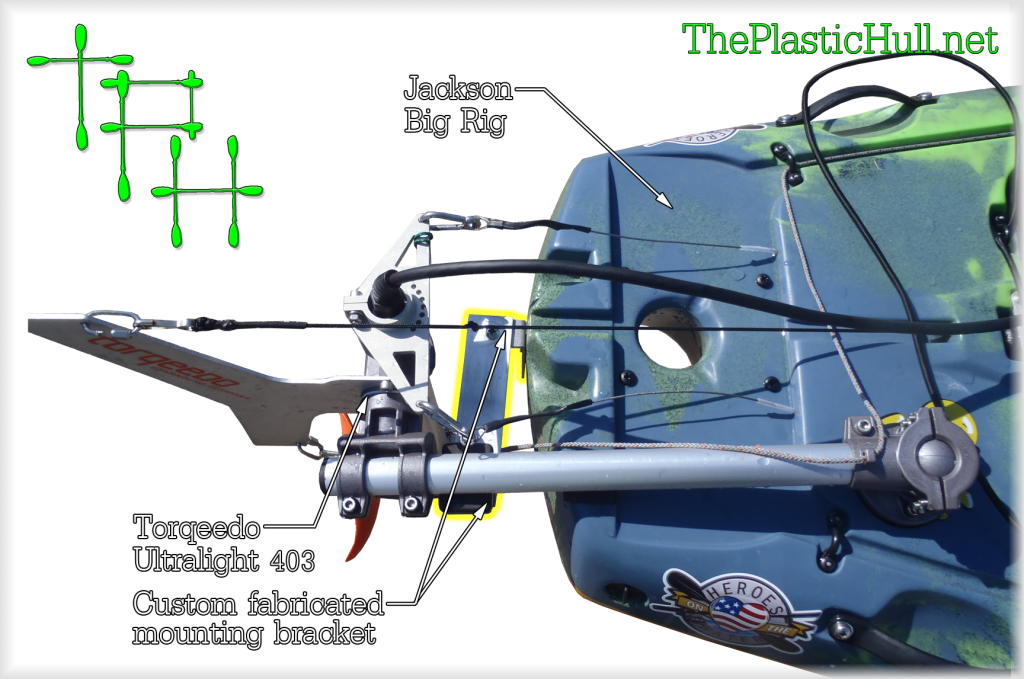 In my previous Torqeedo install article I left off that there was some small issues with the performance due to the limit of the manufacturers motor shaft length. In the install manual it states the boom shaft that attaches to the ball on the kayak is to be completely level. Well this is found to be false. Pitching the boom down towards the water is the fix.
In my previous Torqeedo install article I left off that there was some small issues with the performance due to the limit of the manufacturers motor shaft length. In the install manual it states the boom shaft that attaches to the ball on the kayak is to be completely level. Well this is found to be false. Pitching the boom down towards the water is the fix.
A support brace was custom made by a certified Torqeedo installer which mounts from the factory rudder mount threaded insert location.  On the stern of the Big Rig you will notice the two brass threaded inserts molded into the hull. The rubber brace was removed from the kayak position and mounted to the custom bracket to brace the boom closer to the motor and allow the pitch.
On the stern of the Big Rig you will notice the two brass threaded inserts molded into the hull. The rubber brace was removed from the kayak position and mounted to the custom bracket to brace the boom closer to the motor and allow the pitch.
The longer shaft allows the motor to use the small pitch and gain about 4 inches deeper into the water which was necessary to fix the cavitation issue. The gain on speed is minimal from the testing i have done but has not been tested in the control venue at Round Valley Res where the first test was initiated.
Lessons learned. If I was to install this motor on another Jackson Big Rig I would mount the ball on the flat area about 6″ towards the stern. This would have allowed me to angle the boom down more. For me this was the first time following the installation book was wrong. The setup however did work just not well enough for my liking.
The Torqeedo motor system on the Big Rig is awesome! I do recommend it highly. This was my fix. Hopefully your install will be smoother by following my posts on The Plastic Hull.net.
Good Luck!
Disclaimer:
Installing hardware may cause damage and/or void manufacturer warranties. ThePlasticHull.net its authors or any other source of information on this website is in no way responsible for your actions nor any type issues or damage that may occur. The information provided on this website is a free reference guide only. The authors of all information, sponsors and the owners of the website that host this information are not liable for any problems or issues that arise from the use of this information. Users of this information hereby acknowledge that all use of this information is done by their own free will, at their own sole risk, understanding that destruction of property, injury, or death could occur.
Other Torqeedo Posts:






 Things you will need
Things you will need



